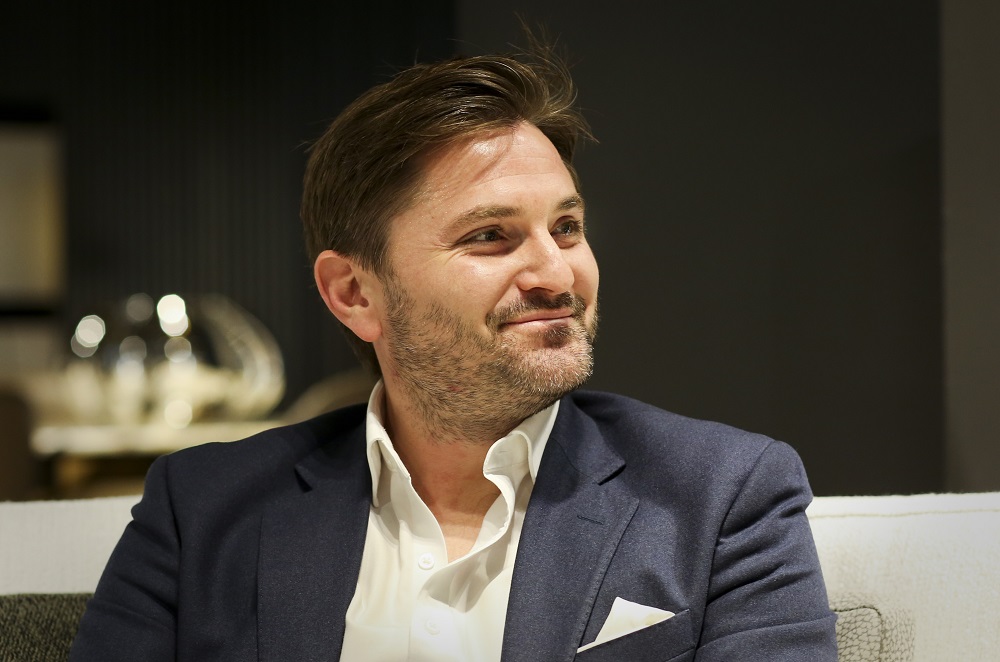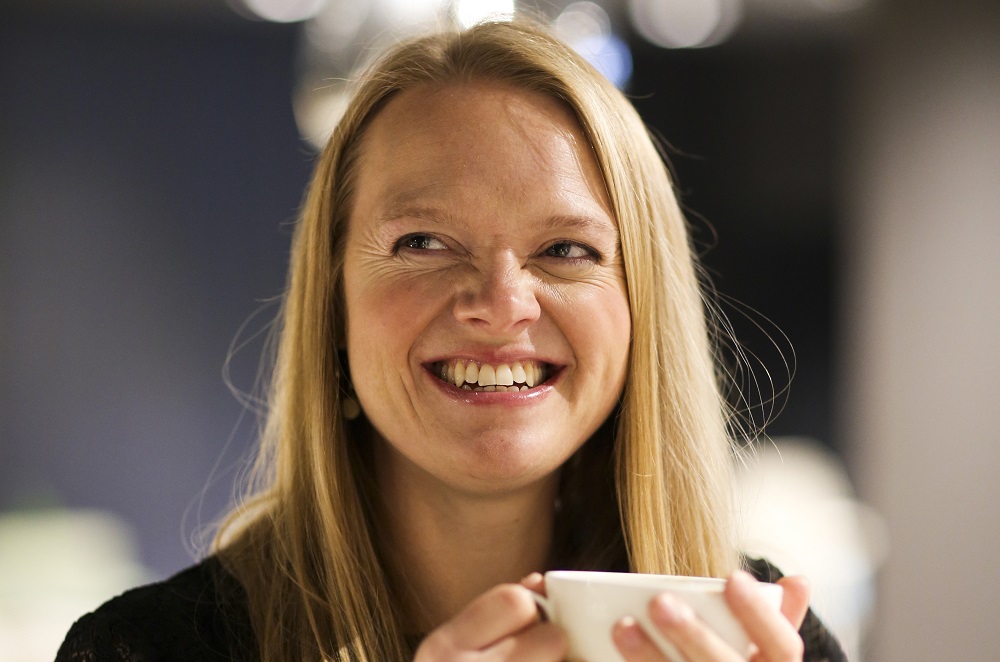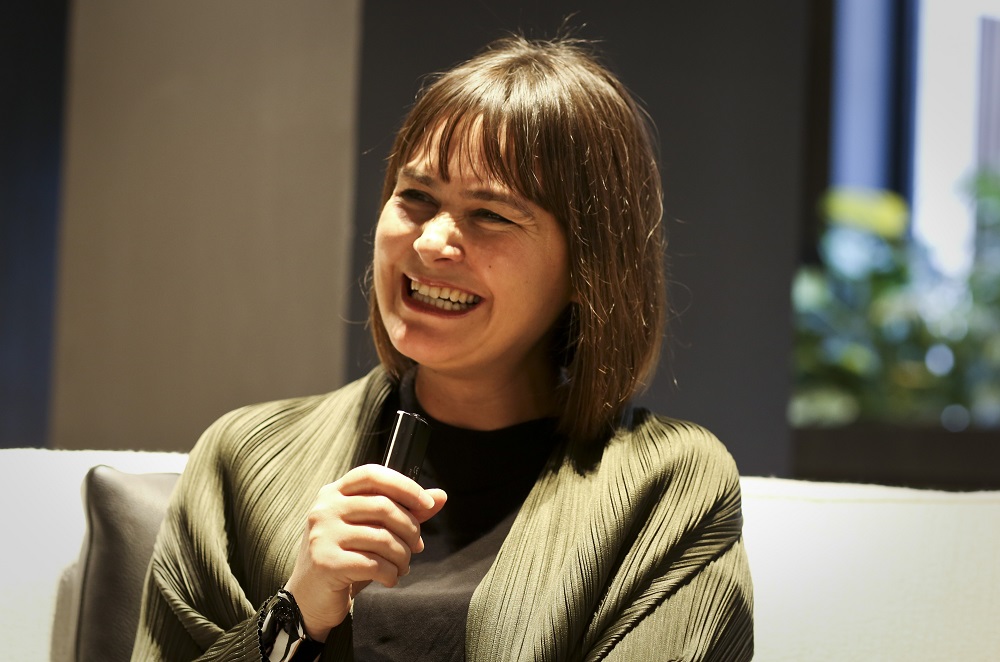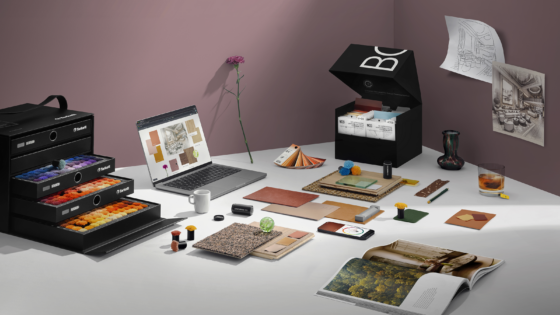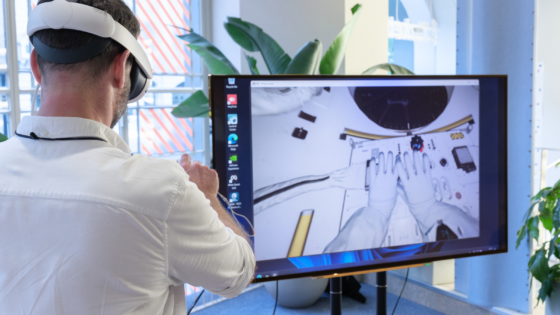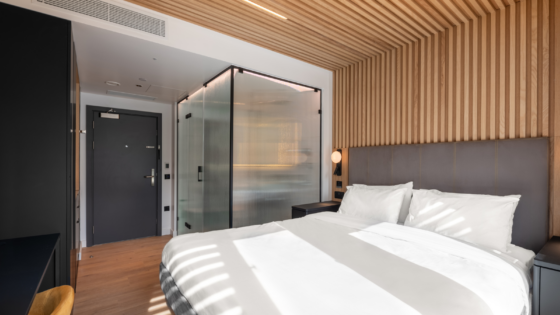To continue Hotel Designs’ series of articles to put sustainability under the spotlight, editor Hamish Kilburn chairs an exclusive editorial roundtable, in collaboration with Minotti London, to understand how today’s leading designers are sensitively working to create a more meaningful luxury hotel design landscape. Joining us on the Minotti sofa to discuss this topic:

- Hamish Brown, Director, 1508 London
- Jo Littlefair, Director and Co-Founder, Goddard Littlefair
- Constantina Tsoutsikou, Creative Director, HBA London
- Hamish Kilburn, Editor, Hotel Designs
- David Mason, Head of Hospitality, Scott Brownrigg
- Digby Summerhill, Director, Minotti London
With the aim to conceive and design meaningful luxury hotels, there is undoubtedly a question mark on how designers and architects can differentiate their projects to stand out as timeless jewels. With the rise in technology and social media, competition for hotel operators and developers is no longer limited to a single neighbourhood; we have very much entered a global arena. But how are today’s leading designers confronting the evolving hospitality landscape, and just how significant is sense of place when approaching sensitive luxury projects? We invited a handful of the industry’s most distinguished innovators to Minotti London‘s alluring showroom in Fitzrovia to find out more.
Hamish Kilburn: What are the largest misconceptions when it comes to designing luxury?
Jo Littlefair, Director and Co-Founder, Goddard Littlefair: Travelling globally, and understanding global attitudes towards luxury is so important. We have clients that have huge misconceptions to whatever project they are developing. We still struggle when clients associate harsh golds and marbles with luxury, for example. I find it really disheartening, because for me, a non-material object like ‘time’ is a luxury. When approaching the design of any luxury hotel, it’s really important to keep in mind the attitude you are trying to create.
Hamish Brown, Partner, 1508 London: There are a few buzzwords that keep coming up in the studio. We don’t have a ‘house style’ as such, therefore we are really trying capture and create sense of place within each projects. It’s not about fashion but about style. If you look at the great Hollywood movie stars now and compare them to images of themselves 30 to 40 years ago, quite often they will look as relevant now as they did then. That is certainly to do with style over fashion. We look at ways in which classical details and proportions can manifest themselves within a design.
David Mason, Head of Hospitality, Scott Brownrigg: The definition of luxury is not the same for everyone. Some may see luxury in technology, while others believe it is in the foundations of a hotel. In our studio, we don’t necessarily design the ultra six-star luxury hotel, but many of our clients are interested in ‘luxury’, which can come from anything from the service down to the attention to detail. What is luxurious to one person is different to another.
Constantina Tsoutsikou, Creative Director, HBA London: I think luxury is also about being generous as a designer. You always give more than what is expected and make sure that the spaces are comfortable and also have longevity. Where I can, I try to avoid anything too shiny. It’s becoming more apparent that the days of clients wanting to the interiors to show off wealth are behind us. Instead, well-designed luxury interiors are more honest and truthful. That in itself is a luxury mindset.
“We have realised that clients want luxury but almost on a shoestring budget.” – Constantina Tsoutsikou, Creative Director, HBA London
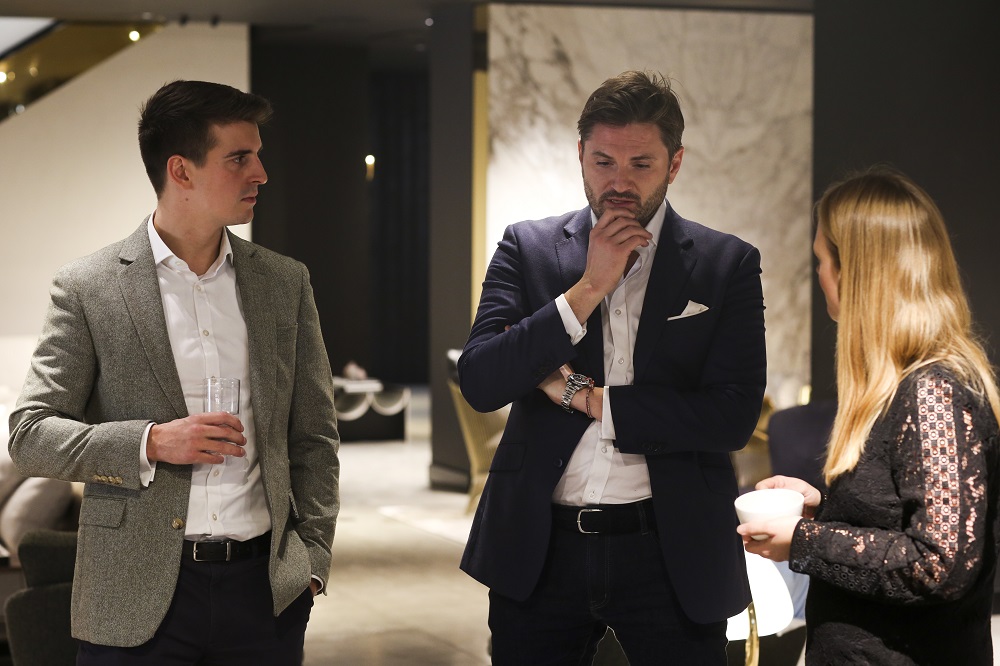
Image caption: (centre) Hamish Brown, (right) Jo Littlefair
HK: When did your clients start accepting a shift in consumer demands when it comes to luxury?
HB: I think it massively goes back to what that hotel means within its location as well as the characteristics of the building. There is certainly more of an acceptance from both sides. Some clients believe that what they want is a grand, sweeping entrance, whereas to really differentiate themselves and to make their hotel work within its location and to be relevant to the building, we suggest to park pre-conceived ideas and think about what would work for that particular hotel.
CT: We have realised that clients want luxury but almost on a shoestring budget. If you compare it to a good few years ago, budget expectations are certainly getting lower. Perhaps it is a sign of the times. At the same time, palettes are becoming more concise, that’s a good thing because designs are cleaner. There’s still a layering there, but the money that was being spilled into a hotel project before the 2008 crisis is not there anymore. However, the expectation certainly is. So, as designers, we have to work out how to manage that.
JL: Also, you cannot ignore the noise and influence of social media – it has a lot to answer for. That inaccurately convinces clients and developers that design is easy and disposable, and that it doesn’t take five minutes to produce a moodboard. But in reality, especially when considering sense of place, you’re thinking about a building and a brand. Putting these elements together requires a real curation of things. Otherwise, I have seen it when people go off on tangents and throw details into the canvas. Nothing ends up gelling and it becomes a messy clash of ideas.
“Trying to get the balance between the soft, the elegant while making these spaces feel comfortable places to work, sit and socialise is a challenge.” – David Mason, Head of Hospitality, Scott Brownrigg
HK: One of the most obvious changes in hotel design, and in the demand from guests, is in the public areas. How has this changed the way in which you specify furniture?
CT: Everybody is working from everywhere. We have a beautiful resort project, which is currently on the boards. As a result of the direct demand from modern travels, we are thinking about putting USB charging sockets on the day beds next to the pool. Generally, I think this is a positive step forward for hotels, which have a life on their own. I think it’s wonderful – and a real stamp of approval from the community – when the neighbourhood becomes part of the life inside a hotel. After all, nobody likes a dead public space.
“All of our furniture is designed at a deliberate height so that each piece can gel with other elements. As opposed to creating one iconic piece, we wanted to create a design DNA.” Digby Summerhill, Director, Minotti London
DM: It’s a hard balance to strike. When our commercial interior designers get asked create these multifunctional spaces, the way in which they design is very task oriented. Trying to get the balance between the soft, the elegant while making these spaces feel comfortable places to work, sit and socialise is a challenge.
Digby Summerhill, Director, Minotti London: We’ve always had modular systems that are flexible. All of our furniture is designed at a deliberate height so that each piece can gel with other elements. As opposed to creating one iconic piece, we wanted to create a design DNA; something that runs through an interior design scene. It’s not a coincidence that no individual item stands out in our collections. One thing I think is interesting is that we didn’t design any of these pieces with hospitality necessarily in mind. Instead we very looked at consumer behaviour and understood the demands of consumers within public areas.
HB: We are often trying to design public spaces to not look like public areas. The idea of a lobby/lounge going against what people would expect in a conventional hotel, to shelter intimate spaces, private nooks where people can work, is very appealing to me. I agree that idea of the community coming in and using the hotel is huge, but perhaps this is something that London has not got right in the past. In other cities there is much more fluidity and it works beautifully. Allowing furniture to adapt to how people are using is a big part of this, and an idea that is really exciting.
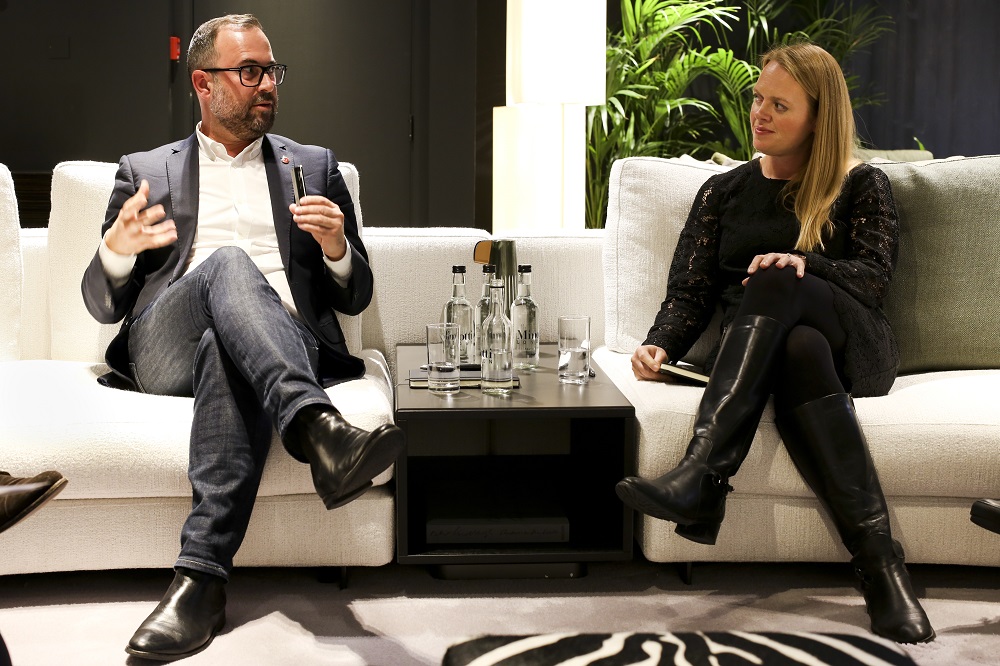
Image caption: (Left) David Mason, (Right) Jo Littlefair
HK: Let’s talk about sustainability. A study recently showed that 76 per cent of guests believe that hotels could be greener. Is consciousness the new luxury, as I suggested in my recent editor’s letter?
JL: We’ve been really encouraged recently to have had two projects come to us with sustainability at their hearts. Absolutely every decision has to have a sustainability angle. What we hope is that it continues through to the final touch points, because there will be financial implications along the way. Having filter taps in the room so that hotel guests can refill water bottles is a fresh approach that I love. The design utilities recycled parts of the existing building, giving a whole new meaning of injecting life back into a hotel. We are really thinking about those elements, including timelessness. I agree that it is about style. For us, it’s not about having a hemp interiors, it’s about creating luxury that has a slight assured sense of elegance and quality that has a higher purpose.
DM: The best way to differentiate luxury when it comes to sustainability is to be clever. Having a brief like this is rare, let alone working on two. So, designers, it is our responsibility to educate our clients and specify materials and items that don’t harm the environment or the end user. Behind this, it’s therefore so important that we understand the products and materials and what sets them apart from others in the market.
“Luxury is not just about design, it is about service as well and so many other things that are intrinsically layered on top.” – Hamish Brown, Director, 1508 London
HK: To me it’s very transparent when hotels use words without actions when it comes to sustainability. Is it the designer’s responsibility to ensure clients avoid greenwashing?
CT: You have to remember, we are designing spaces that will open in three years time. It’s a long time, and things change very quickly. You have to be ahead of the game and lead in that way so that the hotel is relevant when it opens. You have to ensure that the strategy you have in place is looking ahead and avoids the need for significant last-minute changes. On the other hand, as designers, we have a responsibility to influence the clients. But I think soon, it will become a necessity across the entire industry. I predict this will happen faster than we think, and it’s already started with wider conversations with local suppliers.
HK: What are you all doing at the moment to try and differentiate your luxury projects from others?
CT: I am always asking myself, how do I position this hotel in the current market, or in a wider sense, how do I position this hotel for an international clientale? This is because the competition is no longer just the hotel’s neighbour, it’s a global arena.
DM: I suppose it is now about experience. People desire luxury experiences. A hotel group has just bought the Fort of India. How incredible would that be; to stay and experience something totally unmatched like that. Travellers want authenticity and they consider that to be luxury.
HB: Sense of place cannot be underestimated. The definition of luxury differs from place to place and demographic to demographic, and you have to respond, beneath the surface, to understand what is happening in those locations. Luxury is not just about design, it is about service as well and so many other things that are intrinsically layered on top. When those elements and concepts interlock, that’s when you have a seamless luxury experience when service and design sit side by side and are harmoniously linked.
HK: Consumer demands of public areas have spilled out into outdoor spaces. Has this changed the way in which you design these areas together?
JL: We love integrating the outdoor areas so that they becomes a seamless flow where we can. I would say this is especially the case in food and beverage sector. We have recruited designers that only specialise in those areas so that we can get the operational flow right. That connection to the outdoor is integral to our overall wellbeing. Humanity is an element of luxury that we have not touched upon, because our disassociation with human relationships is becoming more enforced by our use of technology. I feel that human touch – it can be as simple as eye contact, and/or just being understood in a different country – is really important that we deliver with hospitality. And first and foremost, design and architecture should enable this.
“Usually I will use the sustainability angle as an added value and not the primary reason why we are specifying, unless the brief has an eco-friendly thread in its core.” – Jo Littlefair, Director and Co-Founder, Goddard Littlefair.
HK: Sustainability is becoming a buzzword that some would argue is losing its meaning. What makes a piece of furniture sustainable for you?
JL: At the end of the day we, as designers, have to ensure that the furniture looks fantastic – and it meets all the needs and demands from our clients as well as regulations. But it really does come down to how we communicate this with the client. We do have to choose our words carefully, but that’s the same as when pitching any idea to the client. Usually I will use the sustainability angle as an added value and not the primary reason why we are specifying, unless the brief has an eco-friendly thread in its core.
DM: Different cultures are going to be more interested than others, that is for sure. It is all about baby steps, and we do as much as we can.
Technology and manufacturing has been a massive help. Sustainable products and materials are now at a price point that works for a client and a luxury brief. To then specify a product that is eco-friendly and longer lasting than another becomes a no-brainer. I really believe it is changing. Clients are more aware of the value of reclaimed or reupholstered furniture. Having said this, it is also a balancing act. I am working on a hotel at the moment with the aim to reupholster the casegoods and the beds, and sadly it is actually almost as expensive as buying new pieces.
“I think if you can justifiably explain how a decision adds value, then cost can sometimes be reconsidered.” – Hamish Brown, Director, 1508 London.
HK: In regards to luxury, do you believe value outweighs cost?
HB: It’s a lovely idea, and my view is that value does outweigh cost. If you look at today’s market and the economy, there is a huge sense of getting value. It’s not always about cost. I think if you can justifiably explain how a decision adds value, then cost can sometimes be reconsidered.
JL: We get closer to understanding the deal that the developer has struck and the budget that has driven the deal, which underpins the whole project. Basically, our client has a figure that they cannot deviate from. So yes, it is common sense, and I do value beautiful furniture, and we do have to be ambassadors that push for quality so that these pieces don’t end up in landfill, but there is a bottom line figure discussion. As a designer, you are the piece of magic in the middle having to constantly and consistently value engineer the project.
HB: The most successful projects that we work on are the ones where everyone involved is upfront and honest with cost and there is a real transparency there.
HK: Has the weight on where the budget is spent in the hotel changed?
DM: It’s always in the ceiling!
CT: I have seen that generally, not enough budget is left for the finishing touches.
JL: For me, it’s artwork.
Following the exclusive panel discussion, the leading designers and architects were able to browse the showroom, which showcased, in an apt setting, Minotti’s 2019 collection of timeless indoor and outdoor furniture.
Minotti London will be the venue of Hotel Designs’ Meet Up London, which will take place in Spring 2020. More details will follow.
If you are interested in hosting our next editorial roundtable, please email Katy Phillips or call +44 (0)1992 374050.

